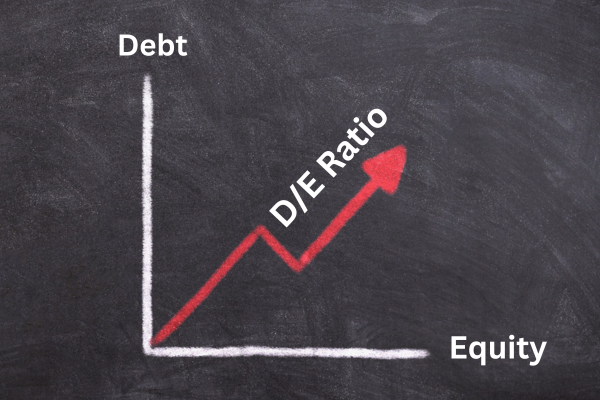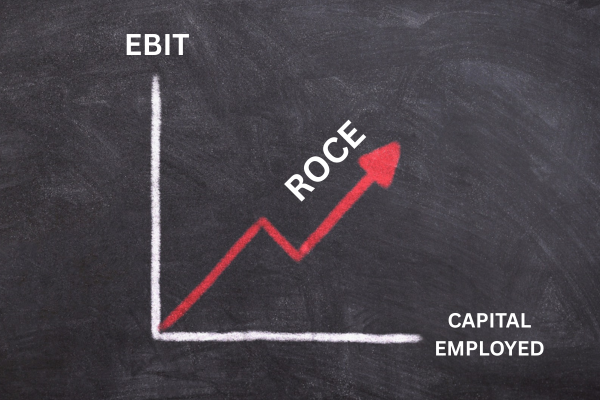Learning how to calculate the Debt to Equity Ratio is essential for anyone analyzing a company’s financial strength. This topic goes beyond simply understanding what the ratio means—it involves knowing the exact steps, formulas, and real-world applications involved in the calculation process.
The Debt to Equity Ratio is widely used in financial analysis to gauge a company’s risk profile and capital structure. In this guide, we’ll explore how to accurately compute the ratio, interpret the results across industries, and apply it to real-life business scenarios for smarter decision-making.
Table of Contents
What is Debt to Equity Ratio?
The Debt to Equity Ratio (D/E Ratio) is a measure that compares a company’s total liabilities to its shareholder equity. It indicates how much debt a company is using to finance its operations relative to the amount of capital supplied by shareholders.
A high ratio may suggest that a company is aggressively financing its growth with debt, which could be risky, while a low ratio might indicate a conservative approach with less financial risk.
Why is Debt to Equity Ratio Important?

- Assesses Financial Stability
The D/E Ratio helps determine if a company relies more on debt or equity for financing. A balanced ratio suggests financial health and long-term sustainability. - Measures Risk Level
A high ratio indicates higher financial risk due to heavy borrowing, while a low ratio points to a conservative approach. This is crucial for risk-averse investors. - Helps in Investment Decisions
Investors use this ratio to evaluate whether a company is a safe or risky investment, influencing decisions on buying or holding stocks. - Guides Lending Practices
Banks and financial institutions analyze the Debt to Equity Ratio before approving loans. A high ratio might lead to rejection or higher interest rates. - Influences Business Strategy
Companies use this ratio to optimize capital structure, ensuring the right mix of debt and equity to support growth while managing risk. - Industry Comparison
It allows stakeholders to compare companies within the same industry, helping identify leaders with strong financial practices.
Debt to Equity Ratio Formula
The standard formula to calculate the D/E Ratio is:
Debt to Equity Ratio = Total Liabilities / Shareholders' EquityWhere:
- Total Liabilities include both short-term and long-term obligations.
- Shareholders’ Equity is the residual interest in the assets of the company after deducting liabilities.
Examples of Debt to Equity Ratio Calculation
Let’s take a practical examples to understand this better.
Example -1
- Total Liabilities = ₹10,00,000
- Shareholders’ Equity = ₹5,00,000
Debt to Equity Ratio = 10,00,000 / 5,00,000 = 2
This means that for every ₹1 of equity, the company has ₹2 of debt.
What It Indicates:
- High Leverage: The company is highly leveraged and relies heavily on borrowed funds to finance its operations.
- Higher Risk: A high ratio (like 2) signals greater financial risk, especially if earnings fluctuate, as more of the company’s cash flow must go toward repaying debt.
- Industry Context Matters: In capital-intensive industries (like infrastructure or utilities), a ratio of 2 might be acceptable, but in others (like tech or services), it may raise red flags.
Example -2
- Total Liabilities = ₹5,00,000
- Shareholders’ Equity = ₹10,00,000
Debt to Equity Ratio = 5,00,000 / 10,00,000 = 0.5
A Debt to Equity Ratio of 0.5 means that for every ₹1 of equity, the company has only ₹0.50 in debt.
What It Indicates:
- Low Financial Risk: The company is not heavily reliant on borrowed money.
- Strong Equity Base: Most of the company’s funding comes from shareholders, not lenders.
- Conservative Financing Strategy: This may appeal to risk-averse investors.
- Lower Growth Potential (Possibly): The company may be less aggressive in using debt to fuel growth.
Interpretation of Debt to Equity Ratio
- Ratio < 1: The company uses more equity than debt. Low financial risk.
- Ratio = 1: Balanced approach between debt and equity.
- Ratio > 1: The company uses more debt than equity. Higher financial risk.
Ideal Debt to Equity Ratio
The ideal ratio depends on the industry. For example:
- Tech Companies: Usually have lower ratios (0.2 to 0.5)
- Capital-Intensive Industries: Like manufacturing or real estate often have higher ratios (1.5 to 2.5)
Factors Influencing Debt to Equity Ratio
- Industry Norms: Different industries have different capital requirements.
- Business Stage: Startups may have higher debt due to funding needs.
- Economic Conditions: Companies might increase debt in low-interest environments.
- Company Policy: Some firms prefer aggressive growth strategies, while others focus on financial stability.
How to Improve D/E Ratio
If your D/E Ratio is too high, here are ways to improve it:
- Reduce Debt: Pay off existing loans and avoid taking new ones.
- Increase Equity: Issue new shares or retain more earnings.
- Improve Profitability: Higher profits can increase retained earnings, boosting equity.
- Asset Revaluation: In some cases, revaluing assets can adjust the equity base.
Debt to Equity Ratio in Financial Analysis
The D/E Ratio is often analyzed along with other ratios:
- Current Ratio: Measures short-term liquidity.
- Interest Coverage Ratio: Indicates how easily a company can pay interest on debt.
- Return on Equity (ROE): Shows how efficiently equity is being used.
Limitations of Debt to Equity Ratio
- Doesn’t Reflect Industry Differences: What’s high for one sector may be normal for another.
- Book Value vs Market Value: It uses book value which may not reflect current market conditions.
- Doesn’t Show Debt Quality: All debts are treated equally, regardless of terms.
- Short-Term vs Long-Term Debt: It doesn’t differentiate between the two.
How to Find Debt and Equity Data
- Company’s Balance Sheet
Access the balance sheet from annual or quarterly financial reports to find total liabilities (debt) and shareholders’ equity. - Investor Relations Website
Visit the company’s official investor relations page for audited financial statements. - Stock Market Portals
Use platforms like Moneycontrol, Screener, or Yahoo Finance for quick access to financial ratios and data. - Regulatory Filings
Check SEBI or MCA websites for company filings if investing in Indian stocks. - Financial News Services
Bloomberg, Reuters, or Economic Times often publish summarized financial data for listed firms.
The Debt to Equity Ratio is a vital metric for evaluating a company’s financial health, capital structure, and risk profile. By learning how to calculate and interpret this ratio, investors and business owners can make informed financial decisions. While it’s not the only measure to consider, combining it with other financial indicators gives a more comprehensive picture.
Understanding the D/E Ratio empowers you to assess investment opportunities more critically, manage your business finances better, and navigate the complex world of corporate finance with greater confidence.
Frequently Asked Questions (FAQs)
Q1: What is a good D/E Ratio ?
Generally, a ratio between 1 and 1.5 is considered healthy, but this varies by industry.
Q2: Can Debt to Equity Ratio be negative?
Yes, if a company has negative equity (more liabilities than assets), the ratio will be negative, signaling financial distress.
Q3: Is a higher Debt to Equity Ratio better?
Not always. While it may indicate growth, it also means higher financial risk.
Q4: What does a Debt to Equity Ratio of 0 mean?
It means the company has no debt and is entirely financed through equity.





